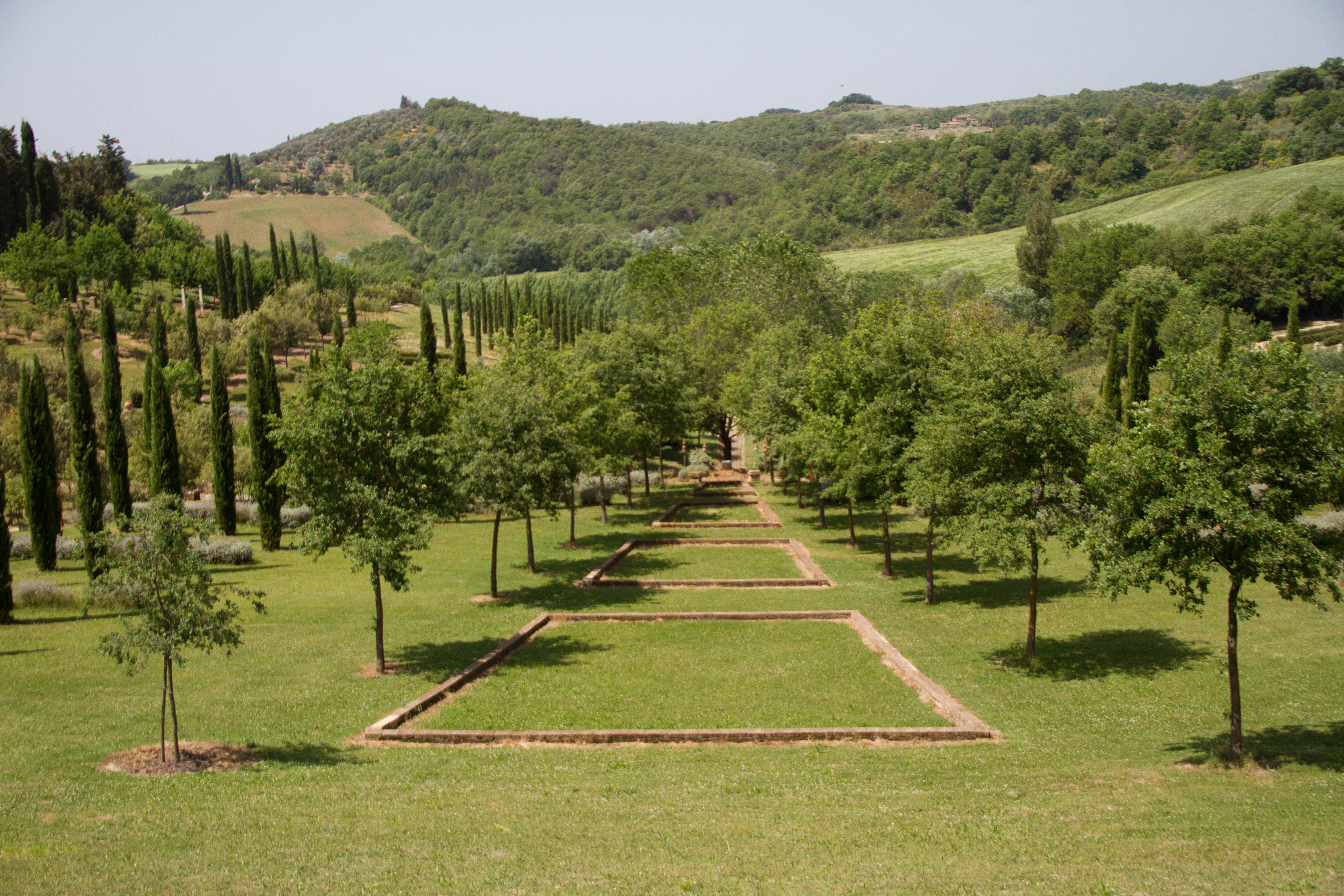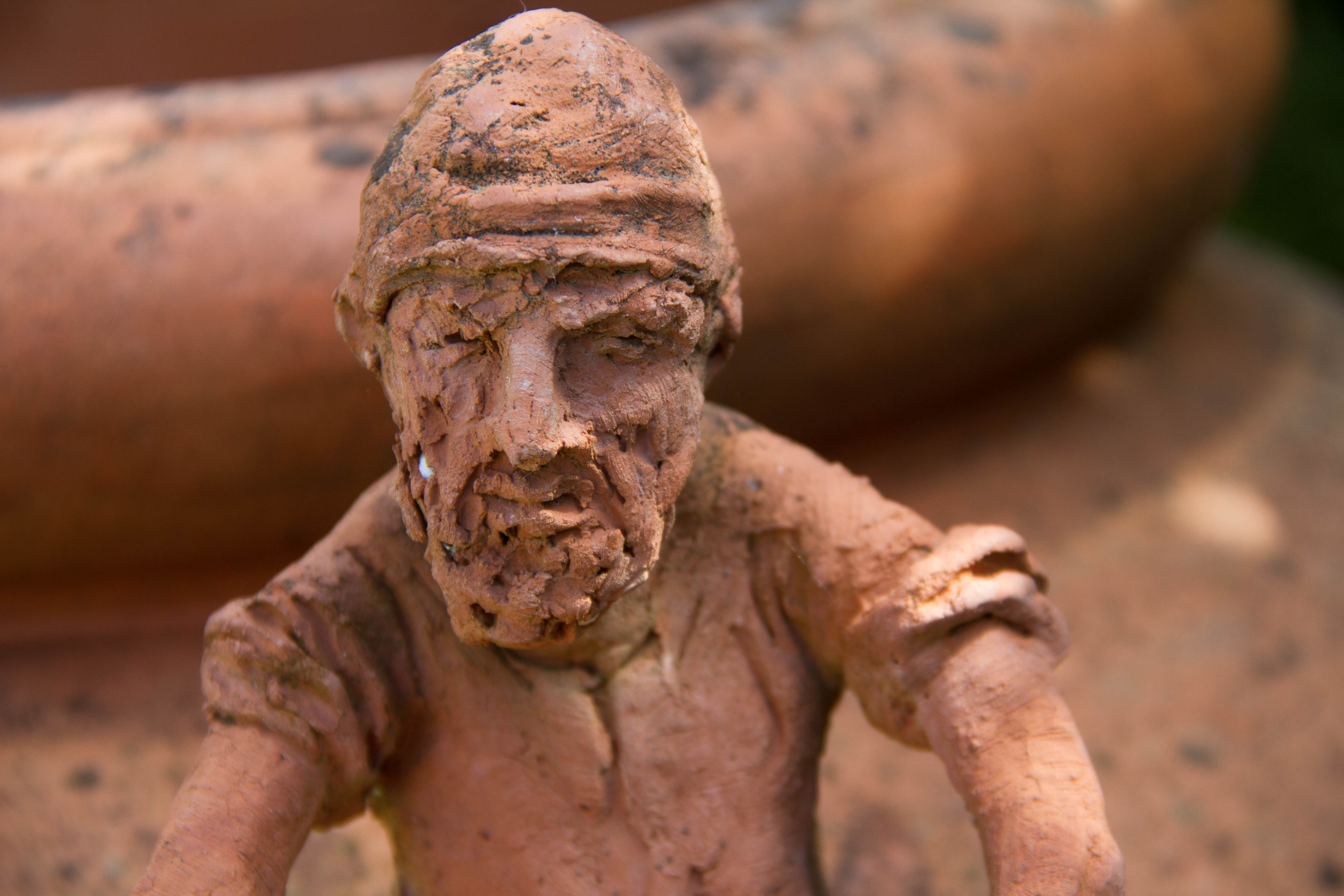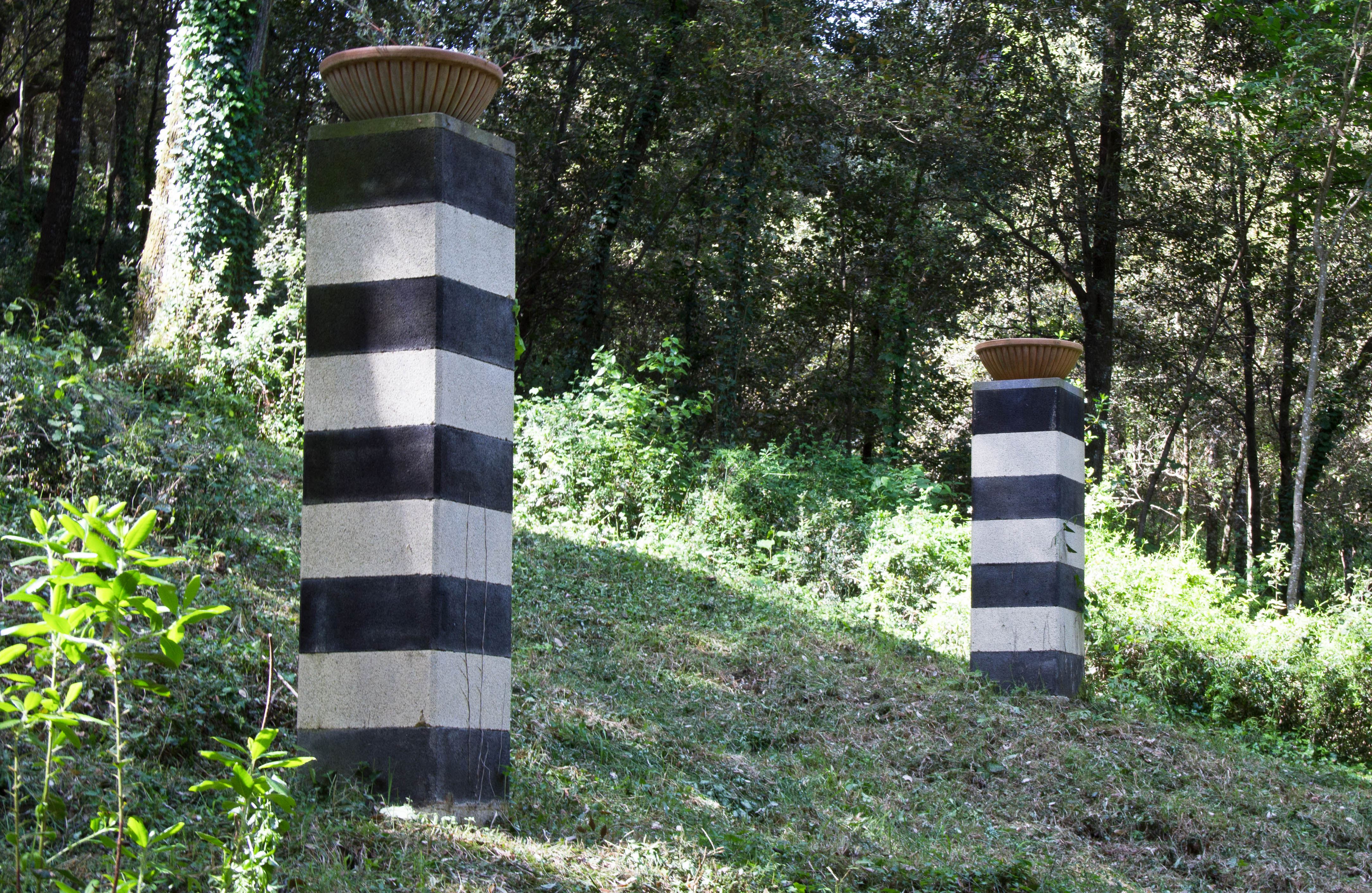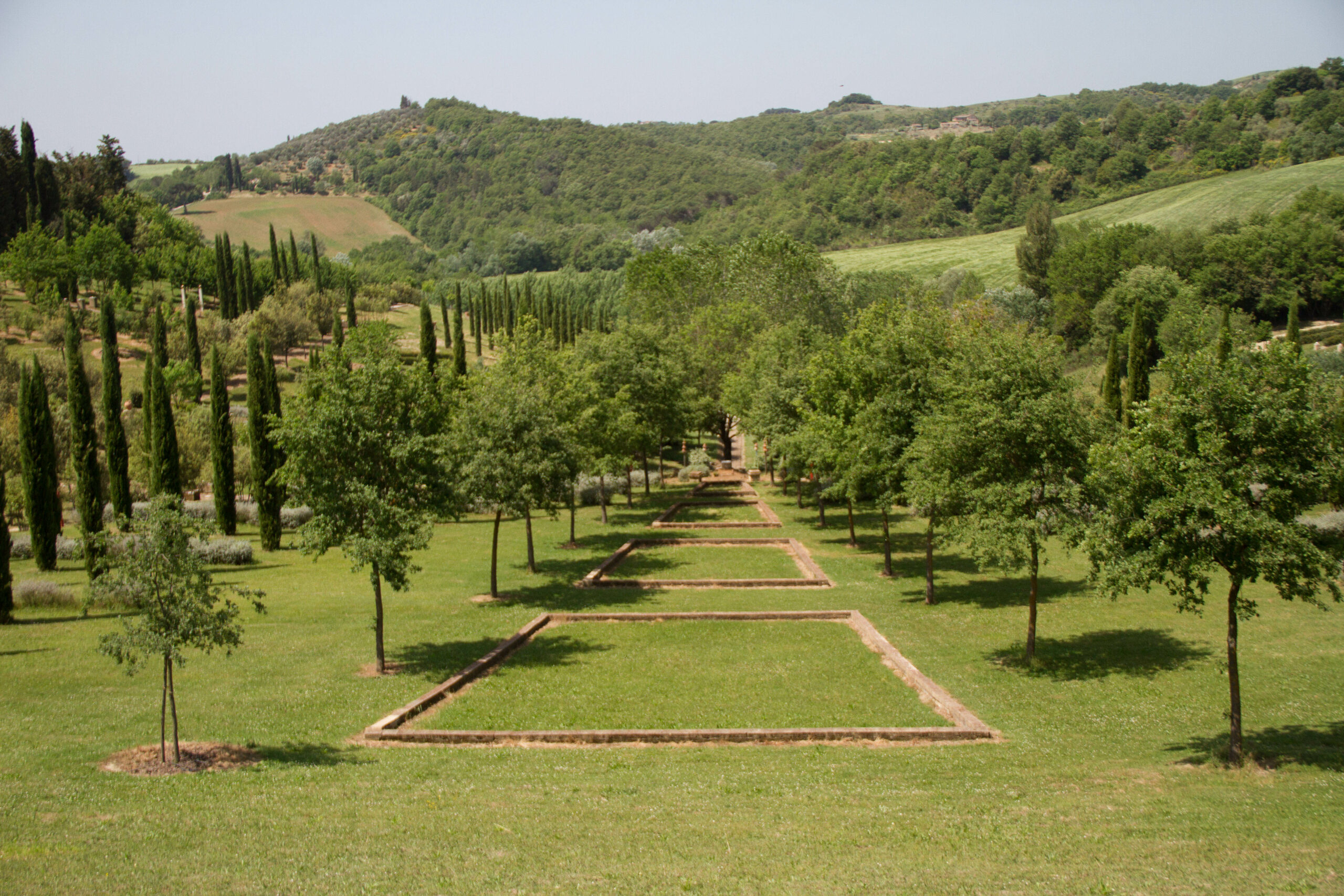Gardens and the peace they can bring are much on my mind today, as the number of people infected with COVID-19 continues to grow. It is a fact that gardens can heal the body as well as the mind. Research from around the world tells us that even brief contacts with nature are beneficial, lowering blood pressure and reducing stress as effectively as antidepressants for mild to moderate depression.
Almost any reconnection with nature has a powerful physical and mental healing effect, even something as simple as weeding a flower bed. That’s a powerful message in these times. But I believe that a garden can do more.
Bosco della Ragnaia, the garden landscape created near Siena in Italy by Sheppard Craige, soothes the soul and excites the mind. I’ve visited this garden twice and would happily return many times more. For this is a place that offers insights that endure.

This overview of the sunny side of Bosco della Ragnaia illustrates how the garden maker has played with perspective and historic precedence.
A 10-acre plot described by its maker as a woodland park of tall trees, Bosco della Ragnaia is more a work of art than a garden in any traditional sense. And although it is privately owned, it is open to individuals at no cost, without reservations or advance booking.
Visitors enter the garden along a tree-lined avenue where clay sculptures by the American artist Frances Lansing depict woodland scenes, animals and Sheppard Craige, the garden maker and Lansing’s husband.

At the end of the path, almost magically, those same visitors move from bright sunlight into deep shade, an abrupt plunge that makes duality, one of the themes of the garden, explicit.
Posts painted in alternate stripes of black and white suggest an antithesis that eliminates any possibility of grey.

But the absolutist position becomes increasingly nuanced as the garden opens up.


Is it a fluke that the stone reading Night appears in sunlight and the stone reading Day appears in shadow? Possibly.
But again and again throughout Bosco della Ragnaia, words question our certainties. Montaigne’s dictum “Que sais-je?” or ‘What do I know?’ makes this explicit.

Shown again and again in the garden as Pan, the Arcadian god of wild groves, Craige is a playful spirit.

If not here, where?
He shows us the universe as it is via a large book that opens to mirror the sky above. At the same time he cautions us against thinking we can comprehend nature in its entirety. An upright stone near the entrance is engraved to read
Everywhere you can see part of it
Nowhere can you see all of it.
The German artist Gerhard Richter once wrote a note to himself. “Pictures which are interpretable, and which contain a meaning, are bad pictures.” A good picture “takes away our certainty, because it … shows us the thing in all the manifold significance and infinite variety that preclude the emergence of any single meaning and view.”
A good garden does the same, and Bosco della Ragnaia is a very good garden. Even while its multiple references demonstrate Craige’s Renaissance sensibilities and familiarity with classical literature, the questioning that underpins it makes Bosco della Ragnaia very much a garden for today, one where unequivocal certainties are continually unsettled.
Our understanding of nature itself comes under scrutiny through the words of Werner Heisenberg, he of the uncertainty principle.

Rarely has a garden become rooted in my mind as deeply as Bosco della Ragnaia, and I find myself returning regularly to my photos and my memories to discover new ideas and interpretations, calling into question my own certainties and beliefs.
Recently, Sheppard Cragie was kind enough to send me a copy of a limited edition booklet he produced that tells the story of the garden. Subtitled “When the woods was ruled by Sages,” the text presents the garden in all its complexity. It offers no simple answers or conclusions, but offers choices:
Dunque, or therefore, on one side of the path,

Invece, or on the other hand, on the opposite.

And lodged in the opening of both, hard, intractable stones.
Again and again throughout the garden, we are encouraged to think about what we see. To take nothing for granted. To consider our surroundings and how we affect them. In the sunlit side of the garden, three stones laid flat on the ground offer counsel: Not Knowing but Asking; Not Asking but Thinking; not Thinking but Doing.
Sage advice for these days, or for any other.






After reading about widows of a certain age who want to remain in their homes who garden, I recently made the decision to stay in my home. According to statistics these ladies are healthier, more supple and alert. I cannot imagine living several stories in the air with no grass or flowers. Now I just have to plant last weeks purchases. Thank you Pat, for your words and pictures that stimulate the senses.
Sherry
Sherry, having a garden to care for is one of things that keeps us all going in tough times. Plant away!
Thank you for this article. It is good to be reminded of the intellectual dimension of gardens. It is healing not only to have one hands in the dirt and grow things but also to construct a microcosm wihich seeks to make sense of the world we live in and addresses the concerns of our age – which turn out to be universal.
I will pass your comment on to Sheppard Craig. Gardens with intellectual dimensions are few and far between, and his is definitely one of the best.
A garden interlude is always appreciated, even one that’s done vicariously! What a pleasant sight and mind experience. I can only hope that my blood pressure has been lowered slightly but, since I’m drinking coffee as I respond, it may not be. Optimistically, I’m going with “the garden” as the empowering force. Thanks for sharing!
Mel, so good to hear from you. And I agree, garden as empowering force has lots to recommend it.
Stay well!